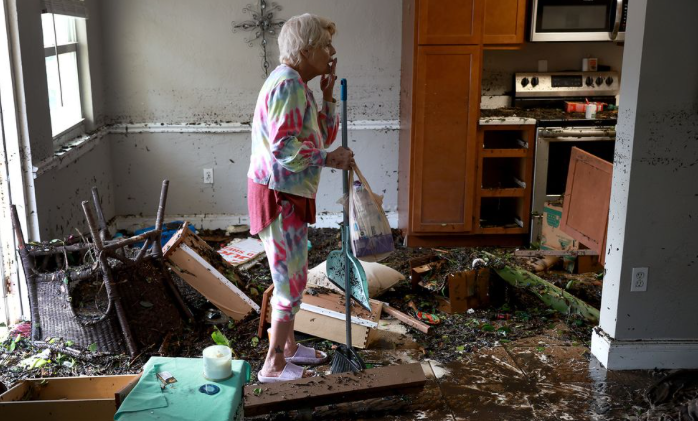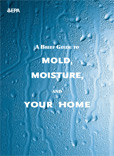Indoor flooding can be a devastating experience for homeowners, leading to extensive damage to their property and belongings. Understanding the causes of indoor flooding, implementing prevention measures, and knowing how to mitigate the damage are crucial for protecting your home. In this article, we will explore the common causes of indoor flooding, effective prevention strategies, immediate steps to take when flooding occurs, and the essential restoration process.

Common Causes of Indoor Flooding
Burst Pipes: Identifying the Culprit
One of the most common causes of indoor flooding is burst pipes. This can happen due to various reasons, such as freezing temperatures, aging plumbing systems, excessive water pressure, or physical damage to the pipes. Identifying the source of the burst pipe is essential for taking immediate action. If you notice a sudden decrease in water pressure, unusual sounds coming from the pipes, or visible signs of water damage, it is crucial to shut off the main water supply and contact a professional plumber. They will assess the situation, repair the burst pipe, and help prevent further flooding.
Heavy Rainfall: Assessing the Risk
Heavy rainfall can overwhelm the drainage systems around your home, leading to indoor flooding. Assessing the risk of flooding in your area is important for taking proactive measures. Research your local flood zones and understand the drainage patterns in your neighborhood. Ensure that your property has a well-maintained and properly functioning gutter system with downspouts directing water away from the foundation. Consider installing additional drainage solutions, such as French drains or catch basins, to help divert excess water and prevent it from seeping into your home.
Plumbing Issues: Detecting and Addressing Leaks
Undetected plumbing leaks can gradually cause water damage and contribute to indoor flooding. Regularly inspecting your plumbing system is crucial to identify and address leaks promptly. Look for signs of water stains, musty odors, or mold growth around fixtures, pipes, or ceilings. Monitor your water meter regularly for any unexplained increases in water usage, which can indicate a hidden leak. If you suspect a leak, call a licensed plumber to perform a thorough inspection and make the necessary repairs. Timely detection and repair of plumbing issues can help prevent potential flooding incidents.
Prevention Measures for Indoor Flooding
Proper Drainage Systems: Ensuring Effective Flow
Maintaining proper drainage around your property is vital for preventing indoor flooding. Ensure that your gutters are clean and free from debris that can block the flow of water. Downspouts should extend at least six feet away from the foundation, directing water away from your home. Evaluate the grading around your property and make sure it slopes away from the foundation to prevent water accumulation. Consider installing a sump pump in the basement or crawl space to remove excess water and prevent flooding during heavy rainfall.
Regular Plumbing Maintenance: Key to Prevention
Regular maintenance of your plumbing system is essential in preventing indoor flooding. Schedule annual inspections by a professional plumber to detect any potential issues before they escalate. During the inspection, the plumber will check for leaks, assess the condition of pipes and fixtures, and ensure proper functioning of valves and connections. They will also recommend necessary repairs or upgrades to improve the reliability and efficiency of your plumbing system. Regular maintenance helps identify and address plumbing problems early on, reducing the risk of indoor flooding.
Foundation Waterproofing: Shielding Your Home
Waterproofing your home’s foundation is a proactive step to protect against indoor flooding. Applying a waterproof sealant or membrane to the exterior walls of your foundation creates a barrier that prevents water from seeping into your home. Additionally, consider installing a foundation drainage system, such as a French drain or a waterproofing membrane with a built-in drainage system. These solutions redirect water away from the foundation and captures it in a sump pump for safe disposal. Foundation waterproofing acts as a robust defense against groundwater infiltration and helps mitigate the risk of indoor flooding.
Immediate Steps to Take When Indoor Flooding Occurs
Safety First: Protecting Yourself and Loved Ones
In the event of indoor flooding, ensuring the safety of yourself and your loved ones should be the top priority. If the flooding is severe or poses any electrical hazards, evacuate the area immediately and seek professional assistance. Avoid direct contact with floodwater, as it may contain contaminants or pose health risks. If it is safe to do so, turn off the electricity and gas supply to prevent potential accidents. Wear protective gear, such as rubber boots and gloves, when handling floodwater to minimize the risk of injury or exposure to harmful substances.
Shutting Off the Water Supply: Minimizing Damage
To minimize the damage caused by indoor flooding, it is crucial to shut off the main water supply as soon as possible. Locate the main water shut-off valve in your home and ensure that all household members are aware of its location. Turning off the water supply prevents additional water from entering your property and exacerbating the flooding. It is recommended to label the shut-off valve and provide clear instructions on how to operate it. If you are unsure about shutting off the water supply, contact a professional plumber for assistance.
Salvaging Belongings: Quick Tips for Recovery
Once the immediate safety measures have been taken and the water flow is under control, you can start salvaging your belongings. However, it is essential to prioritize personal safety and consult with restoration professionals before handling contaminated items or entering heavily damaged areas. Remove any items that are not affected by the flooding to a safe, dry location. For water-damaged items, follow these quick tips:
- Document the damage: Take photographs or videos of the affected items for insurance purposes.
- Separate salvageable and unsalvageable items: Determine which items can be cleaned, dried, and restored.
- Dry and clean salvageable items: Use fans, dehumidifiers, and proper ventilation to dry out items. Clean and disinfect them thoroughly to remove any contaminants.
- Seek professional help: For valuable or sentimental items, consult with restoration experts who specialize in restoring water-damaged belongings. They have the knowledge and equipment to restore items effectively.
Remember, each flooding situation is unique, and it is essential to consult with professionals like FloodX to assess the extent of the damage and receive guidance on the restoration process specific to your situation.
Google+








